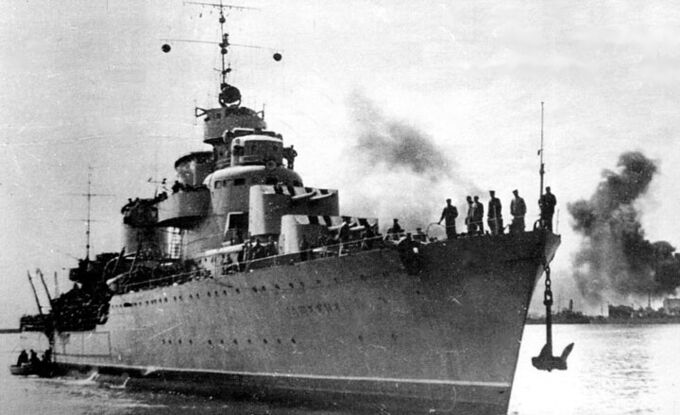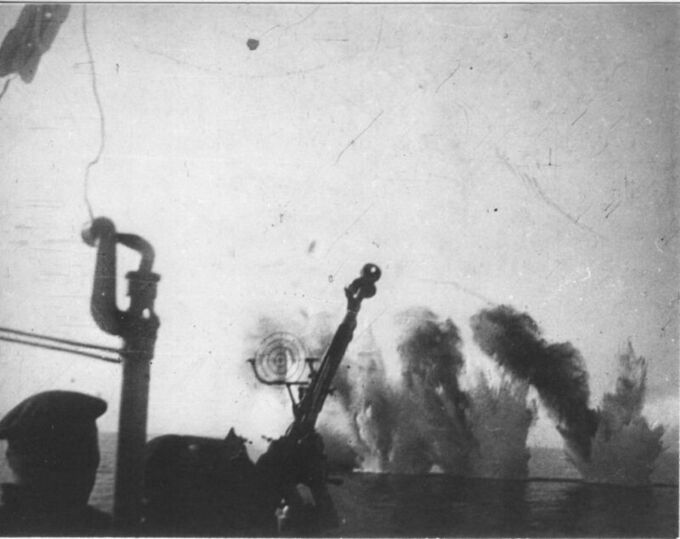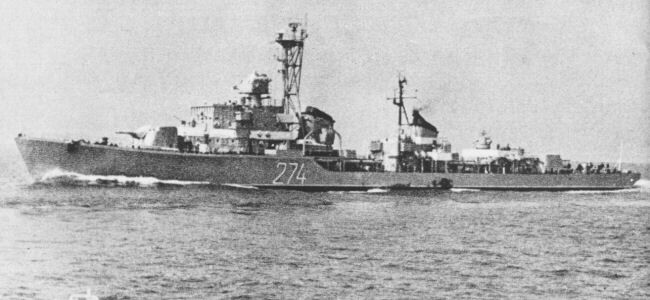Unsatisfied with their domestically built Leningrad-class destroyer leader, The Soviet Navy sought foreign assistance to help them build a new destroyer. The Italian company Odero-Terni-Orlando (OTO) took on that challenge to build a big destroyer to serve as Soviet Navy Flotilla Leader. This ship would later be the most powerful destroyer the Soviet Navy had during WW2 and would later serve as a reference for future Soviet destroyers.
Background
After the first ship of the Project 1 design, Leningrad, was completed, the Soviet navy was disappointed with the structure and build quality of the ship, and thus sought foreign assistance, just like they sought help when building their Project 26 Kirov-class cruiser. This time, they accepted the submission from the Italian company Odero-Terni-Orlando (OTO) to build a fast destroyer leader. The first ship of the class, project number 20, named Tashkent, would be built in OTO’s own shipyard and the rest would be constructed in Soviet shipyards with the help of the Italians.
Originally, 11 ships of this class were planned, but the number was reduced to just 4. Ultimately, the remaining three were canceled before they could be laid down in Soviet shipyards due to difficulties in adapting the Italian design to Soviet shipbuilding practices. This left Tashkent as the only Project 20 ship to be built.
Design
This new Soviet destroyer followed the Italian fast destroyer doctrine, emphasizing speed and maneuverability, unlike Soviet destroyer doctrine which relied on firepower. With a length of 139.7 meters, a beam of 13.7 meters, and a displacement of 2,840 long tons, she was larger and heavier than her predecessors. She was equipped with two steam turbines, each driving a three-bladed propeller, allowing her to reach a top speed of 42.7 knots (79.1 km/h) at full load—making her the fastest destroyer in the Soviet Navy.
Armaments
For her armaments, she was originally designed to carry three twin 130 mm/50 B-13 guns in B-2LM turrets, six single 45 mm/46 21-K anti-aircraft guns, six single 12.7 mm DShK machine guns, three triple 533 mm torpedo tube mounts, 76 naval mines, and 24 depth charges. However, at the time of her completion, the B-2LM turrets were not yet ready, so three single 130 mm/50 B-13 guns were installed as a temporary substitute.
In February 1941, she underwent a minor refit where the planned B-2LM turrets were finally installed, and her six 45 mm/46 21-K guns were replaced with six 37 mm/67 70-K autocannons.
Her final modification came during repairs following damage sustained during the Siege of Odessa in August 1941, when a twin 76 mm/55 39-K mount was added to her stern.
Service History
Commissioned in 1939, Tashkent saw little action until the German invasion of the Soviet Union in 1941. During the Siege of Odessa, she escorted transport convoys and provided naval gunfire support, but was damaged by enemy bombers in August. After undergoing repairs, she resumed active service—ferrying reinforcements and supplies, evacuating wounded soldiers and civilians, and bombarding Axis positions throughout the Siege of Sevastopol.
In June 1942, a swarm of Ju 87 dive bombers inflicted severe damage on Tashkent. She was towed back to Sevastopol, where she eventually foundered in the harbor. Following the German capture of Sevastopol, the wreck was partially scrapped by the Germans. Later, after the Soviets retook the city, the remaining hull was broken up, marking the end of Tashkent’s story.
Tashkent Successor
Following the cancellation of the three Tashkent-class destroyers that were to be built in Soviet shipyards, Soviet designers modified the original design to better suit domestic shipbuilding capabilities. This effort resulted in the Project 48 Kiev-class destroyer. A total of 12 ships were planned, but only three were laid down—and one of those was canceled before launch.
The two ships that were launched had to be evacuated due to the German invasion, which halted their construction. After the war, work resumed with some modifications based on wartime experience, now designated as Project 48K. However, with limited resources and the similarly sized Project 30bis Skory-class destroyers already under construction, the Soviet Navy saw no need to complete a pair of unique, outdated designs. The project was officially canceled in 1950.
Sources:
Images:










